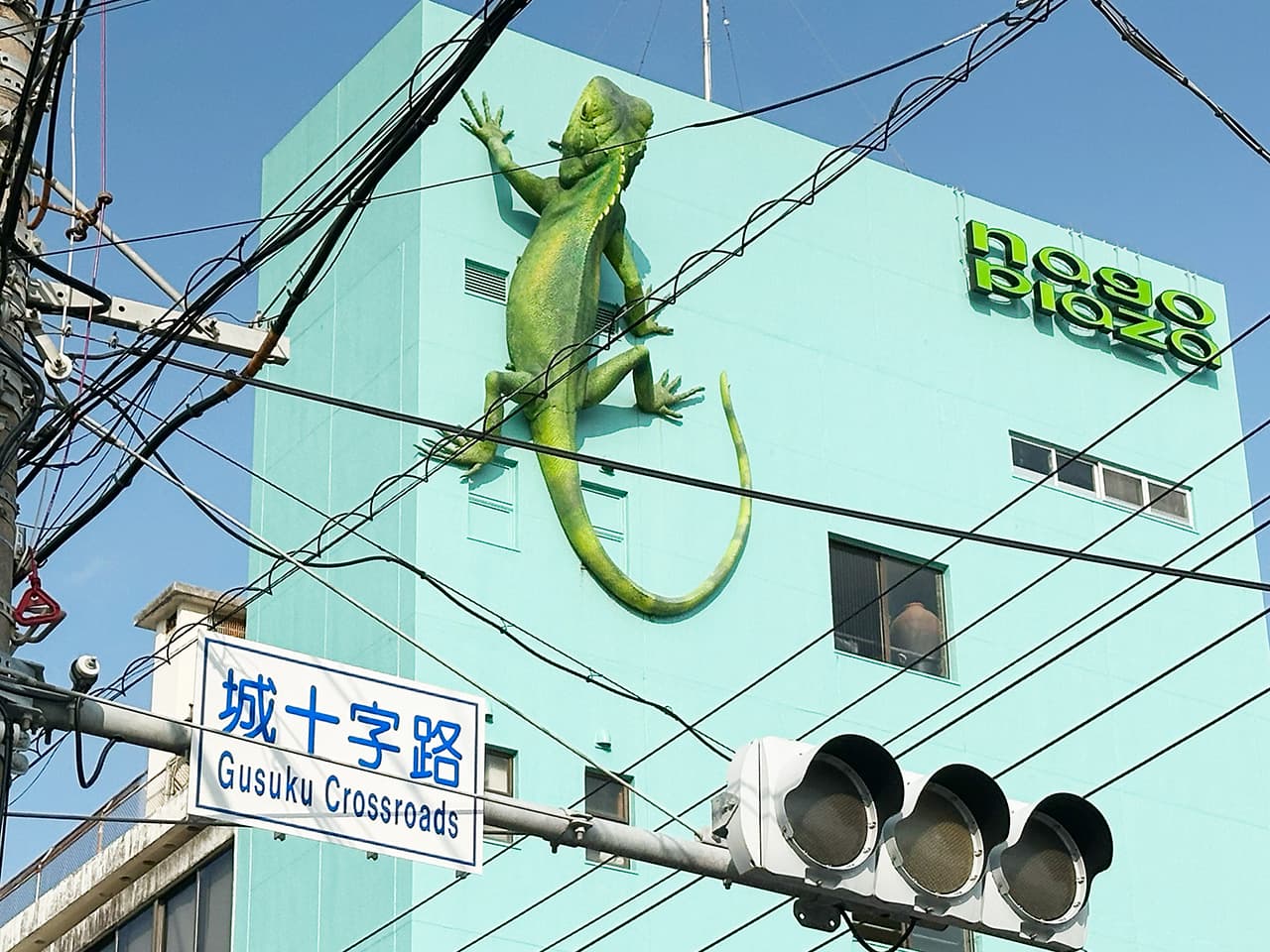The picturesque Otonashi Shinsui Park
The tempting smell of ramen, a river covered in petals of sakura, and a 600 year old tree. What more can you wish for a stroll in the park?
Standing outside the North exit of Oji Station, I couldn’t decide what was more inviting — the spectactular view of the park just ahead of me, or the mouth-watering smell coming from the nearby ramen shop (to make things worse, they had the kitchen window open as well). But I had my camera with me and I was on a mission, so eventually I had to ignore the temptation.
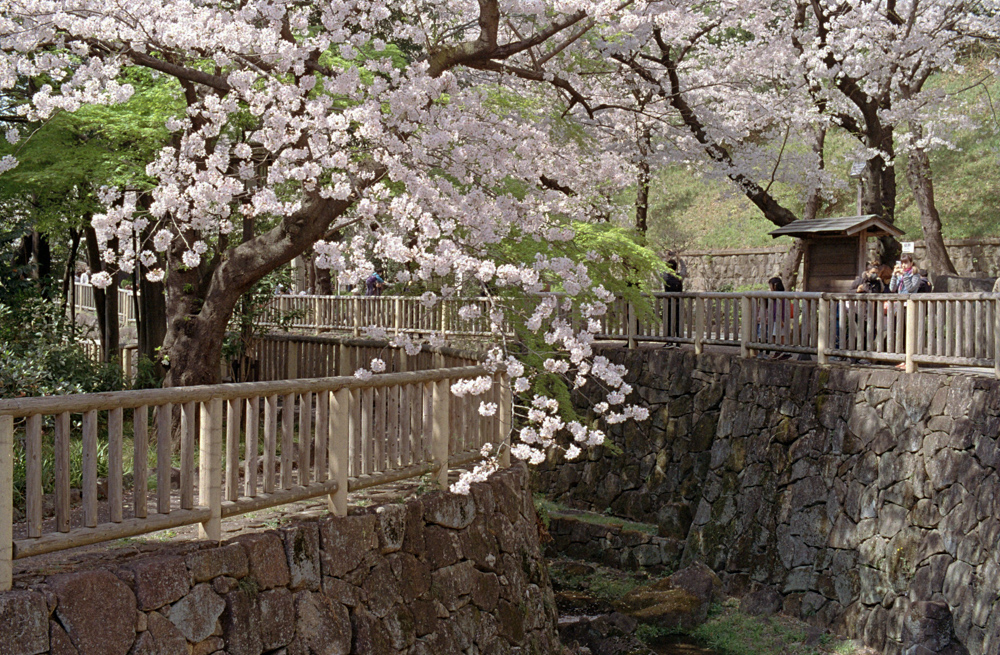
What an awesome place! Like a painting! Made me forget that fine ramen instantly. From both left and right, the sakura trees in full bloom reaching over a narrow river channel with high stone walls. Moss-covered boulders scattered over the stream bed. A few steps ahead, a watermill and a traditional wooden bridge just behind it. All the way in the back, a much larger bridge spanning over the park as if it’s protecting this green oasis from the city that surrounds it.
It was still early morning, and luckily most people like to sleep in on Saturdays. Good chance to snap some clean photos before they started trickling in (and they did, it’s hanami season after all).
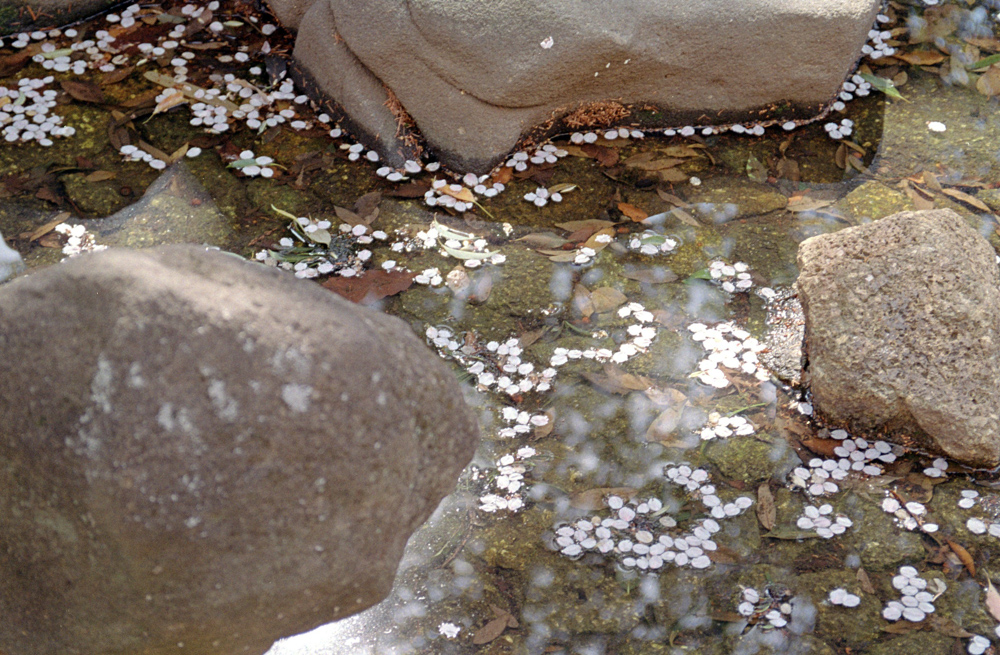
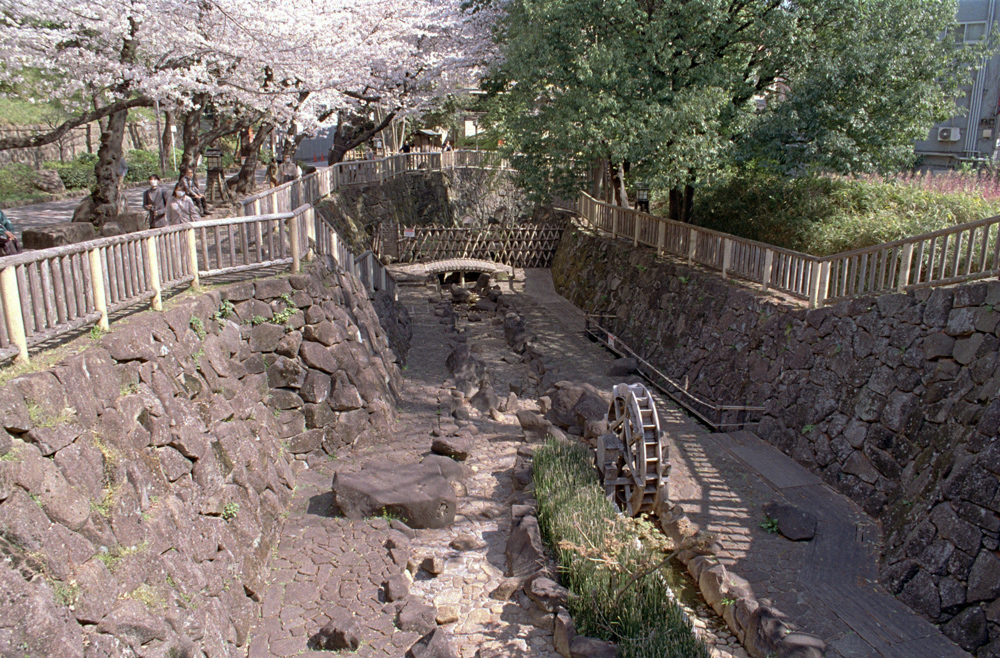
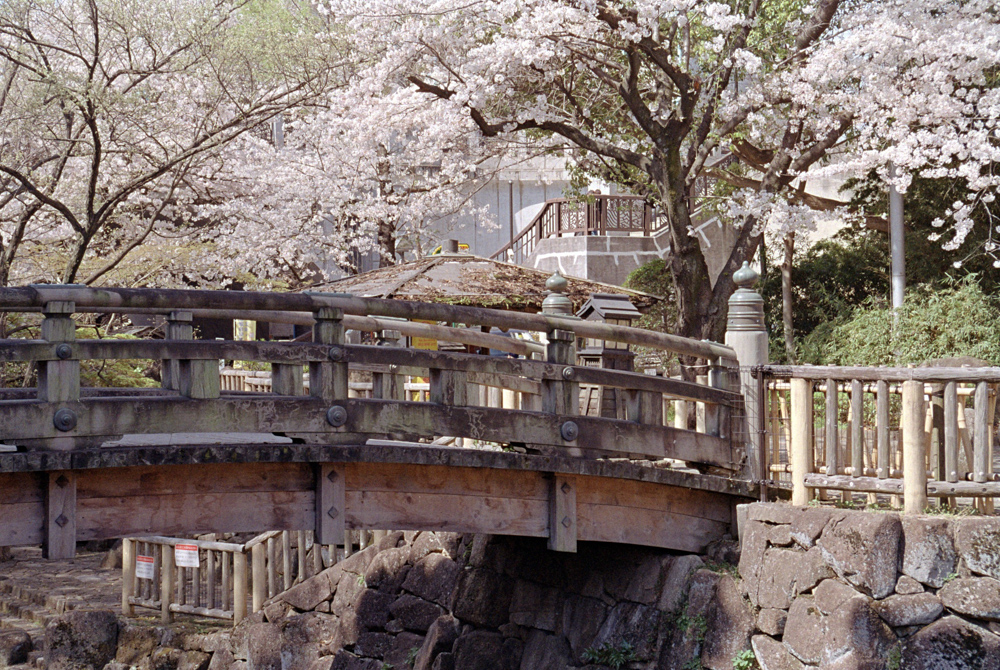
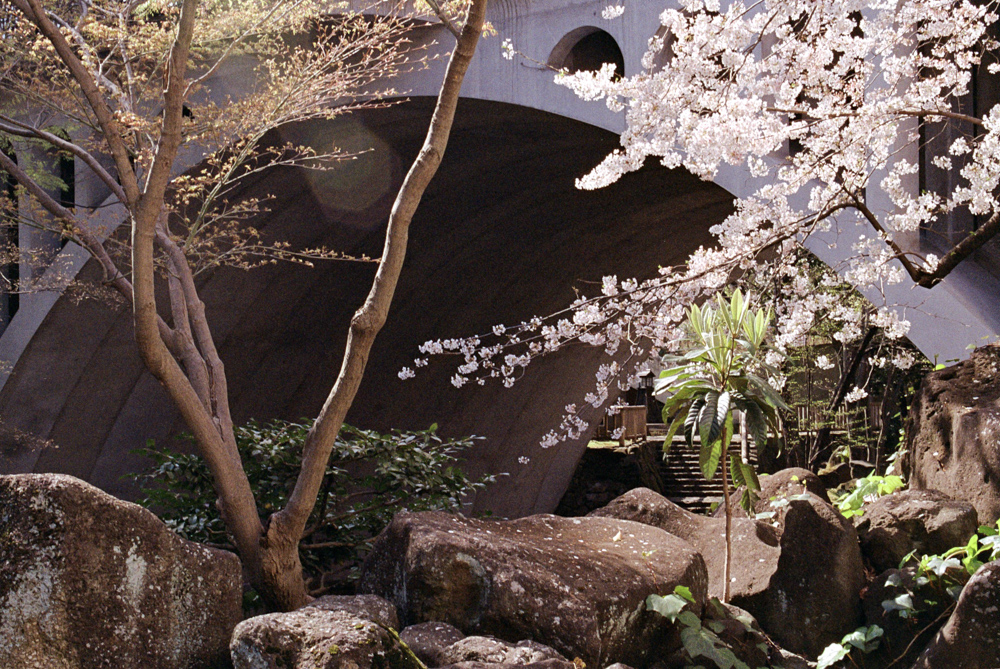
Otonashi Shinsui Park (the name literally means “no-sound aquatic park”) lies in the former Shakujii River basin in Tokyo’s Kita ward. The park itself is relatively new, but the area along this river (also known as the Otonashi River) has been a popular scenic spot for a very long time. It was often depicted in ukiyo-e paintings during the Edo period. On the stairway of the arched bridge that goes over the park I came across a tiled picture of Hiroshige Ando’s woodblock print of the Otonashi River landscape. Definitely a nice idea (rather than having some kind of an advertisement poster on there).
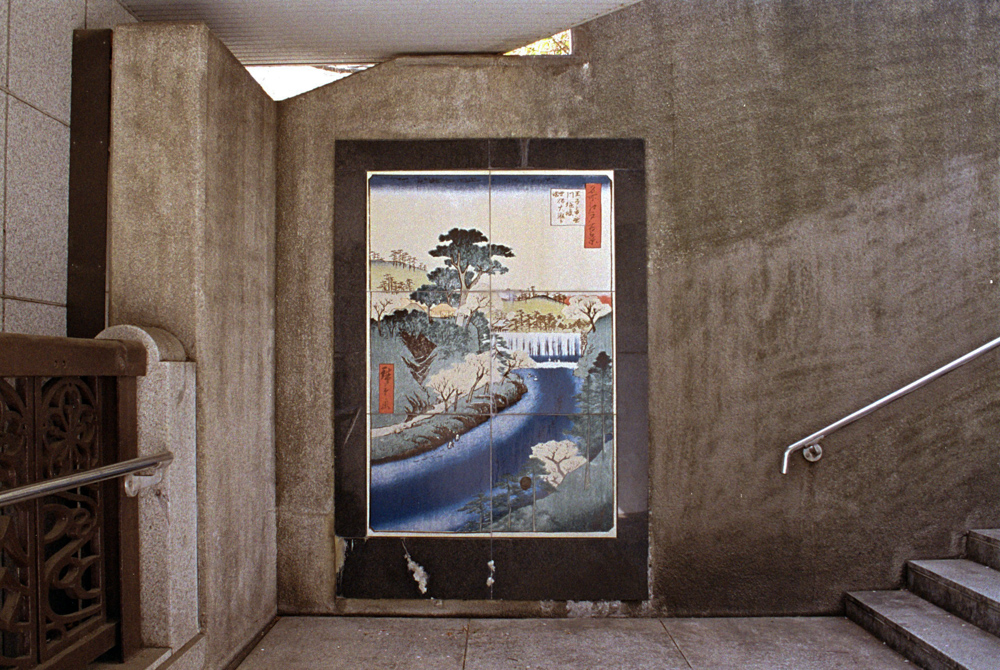
As I learned, this park wouldn’t be here today if it wasn’t for a few unfortunate events. In the past, the Otonashi River often caused repeated flooding. A major disaster in the Oji area happened during the powerful Kano River Typhoon in 1958. Among other damage, the wooden Funakushi Bridge, originally built in 1907, was completely washed away (the wooden bridge that’s in the park now is a reconstruction).

During the postwar recovery, the river basin was rapidly developed which only increased the risk of flooding. This led to countermeasures to prevent future damage; they decided to straighten the meandering river and redirect the flow. A 472 meters long bypass tunnel was built that runs beneath the adjacent Asukayama Park and the platforms of Oji Station.
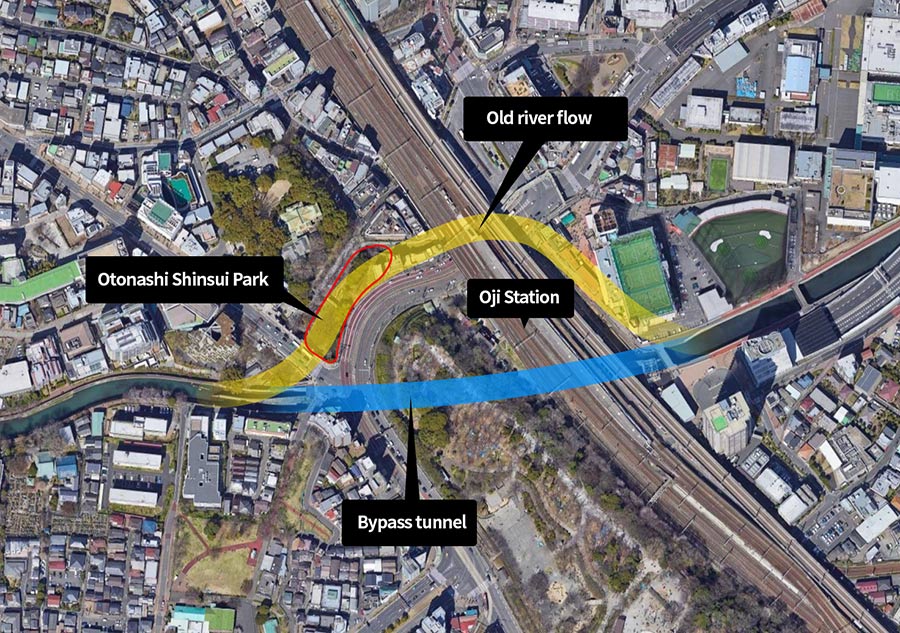
At the same time, this kind of development brought other problems — the green shores disappeared under thick concrete and the water became polluted with household waste, making the river appear like a drainage channel. Thankfully, steps were taken to remedy this. Later on in the 80s the ward began a restoration project in the old basin where the river used to flow. The result was a very well-made park that brought back the appearance of the former natural environment. The Otonashi Shinsui Park was opened in 1988.
While not as famous as other big parks in Tokyo (but maybe that’s a good thing), it’s a popular spot to visit in all four seasons. It has been selected as one of the “100 best city parks in Japan”.
As is my habit, I went on a little side quest. Just a few steps uphill from the park on the opposite side towards the adjacent Oji Jinja shrine, there is an old, huge gingko tree, 24.2 meters tall with a circumference of 5.2 meters. But with all the other trees around, it’s kind of easy to miss it if you are distracted with the park. The tree is believed to be 600 years old. It certainly does look like it.
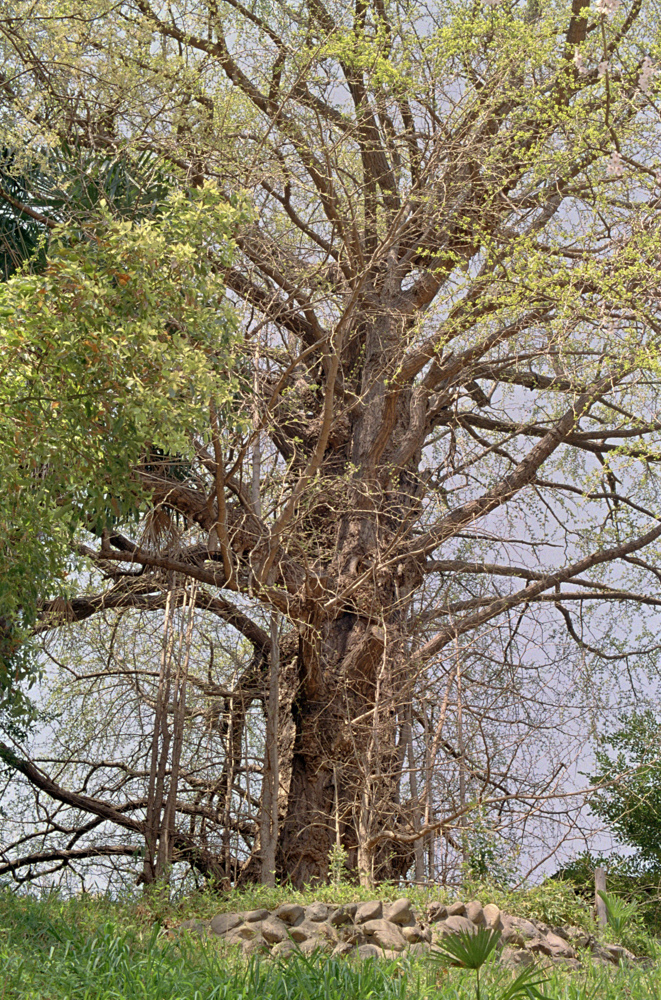
For my last stop, I went a bit further away from the park following the path on the left bank of the river. There is a spot with 4 small sculptures representing the birds that live in the area. The pedestals have built-in speakers so you can listen to birds’ voices, and even a plaque with Braille writing (probably describing the bird). There are boards with illustrations of the local birds placed along the path as well.
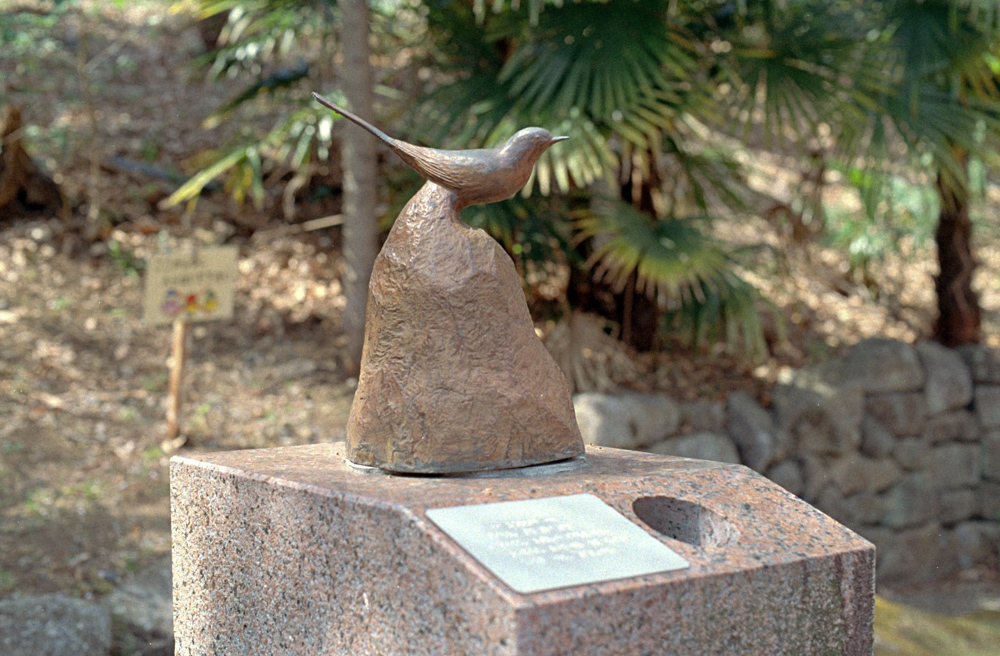
If you keep following the path westward, you can find a lot of green spaces along the river. In general the whole area seems very diverse, and all the surroundings blend well together.
My time was up for that day. Coming back to North exit of Oji Station where I started, I ran into that crazy ramen aroma again. But I wasn’t hungry; in fact, I was looking forward to get back home to start developing the shots of this amazing park.
